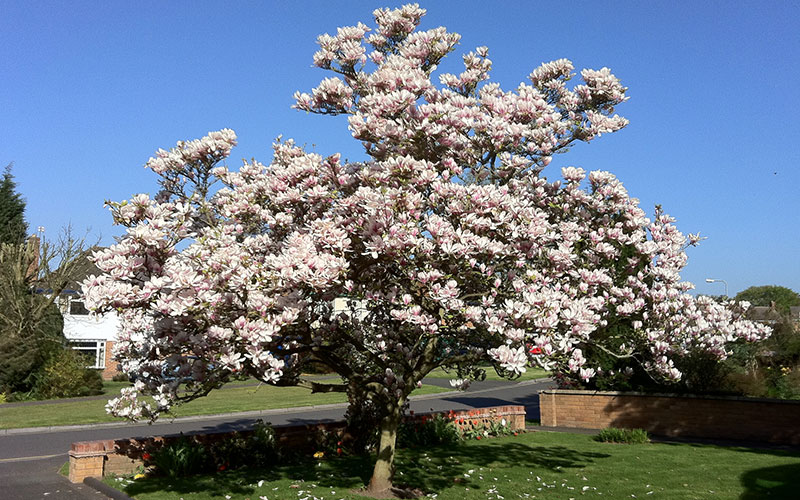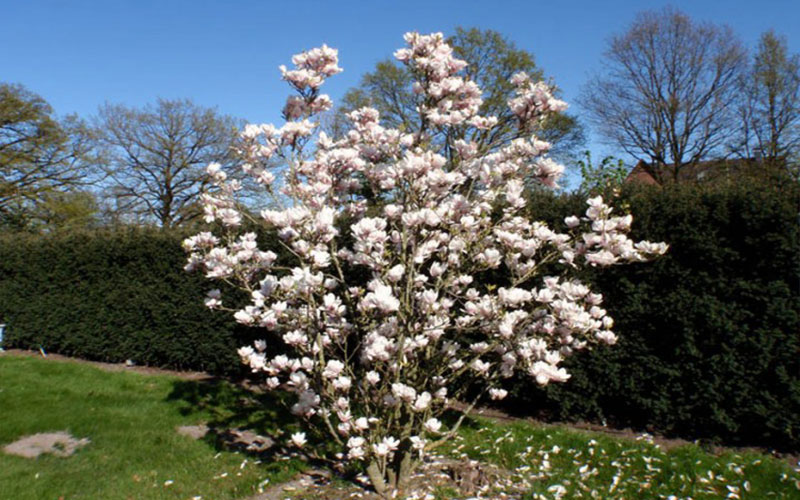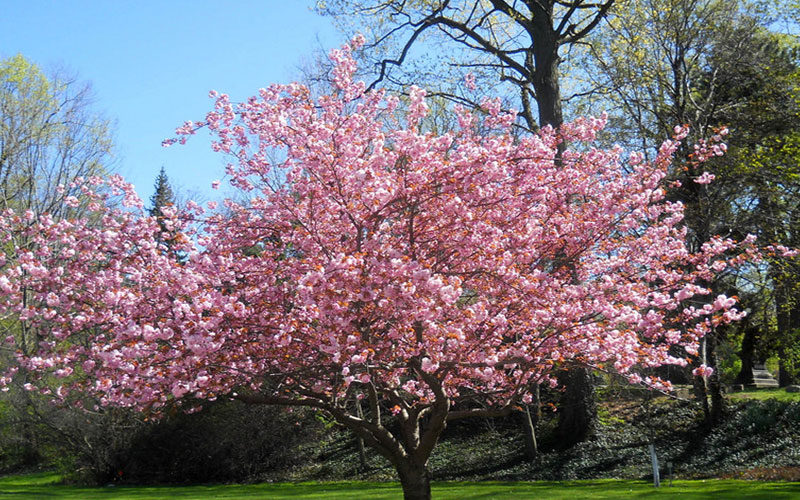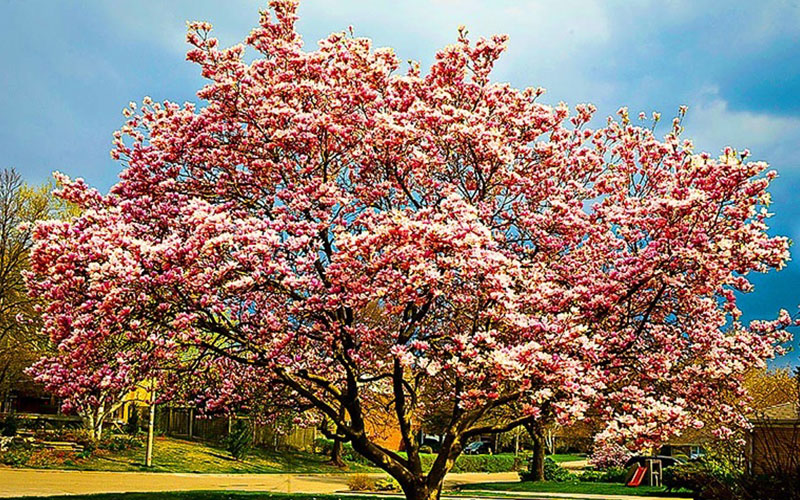Explore The MAGNOLIA TREE

Large, fragrant, white blossoms are just the beginning of the appeal of a magnolia tree. These attractive trees also feature glossy, dark green leaves and a large, exotic-looking pod that opens in fall to reveal bright orange-red berries which are relished by birds and other wildlife.
Learn More About The MAGNOLIA TREE
Planting Instructions
Magnolia trees are native to East Asia and the Himalayas, eastern North America and Central America. They grow 40 to 80 feet tall with a spread of 30 to 40 feet. Depending upon the species, magnolias may be evergreen, semi-evergreen or deciduous. Some of the deciduous types bloom in early spring before the tree leafs out.
One of the difficulties of magnolia tree care is managing the large, crispy leaves that continuously fall from the tree. Many people remove the lower limbs of a magnolia tree to facilitate mowing, but if you leave the lower limbs on the tree they will drape to the ground, hiding the fallen leaves.
The shade from the tree and accumulation of leaves prevents grass from growing, and as the leaves break down they provide nutrients for the tree.
One of the difficulties of magnolia tree care is managing the large, crispy leaves that continuously fall from the tree. Many people remove the lower limbs of a magnolia tree to facilitate mowing, but if you leave the lower limbs on the tree they will drape to the ground, hiding the fallen leaves.
The shade from the tree and accumulation of leaves prevents grass from growing, and as the leaves break down they provide nutrients for the tree.
Plant Care Tips
If you are looking for an ornamental tree that will tolerate wet, soggy soil, you need look no further than a magnolia. Magnolia planting is best done in a moist, rich, slightly acidic soil that is amended with compost or leaf mold will get the tree off to a good start.
As part of your magnolia tree care, you’ll need to water the trees to keep the soil around the base of the tree moist. It is especially important to keep young trees well-watered until they become established.
Fertilize in spring when the flower buds begin to swell with a slow-release fertilizer.
As part of your magnolia tree care, you’ll need to water the trees to keep the soil around the base of the tree moist. It is especially important to keep young trees well-watered until they become established.
Fertilize in spring when the flower buds begin to swell with a slow-release fertilizer.




